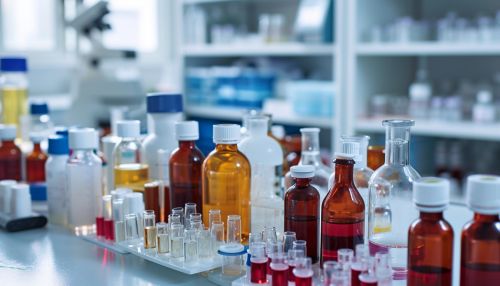Biopharmaceutical
Introduction
Biopharmaceuticals, also known as biologics, represent a rapidly evolving and high-growth segment of the pharmaceutical industry. They are medicinal products synthesized from biological sources, including humans, animals, and microorganisms, and are characterized by their complexity and size in comparison to small molecule drugs.
History and Development
The development of biopharmaceuticals dates back to the 19th century with the use of vaccines and antiserum therapies. However, the term 'biopharmaceutical' was first used in the 1980s, coinciding with the advent of recombinant DNA technology. This technology enabled the production of complex proteins such as insulin and growth hormones, marking the beginning of the modern era of biopharmaceuticals.
Types of Biopharmaceuticals
Biopharmaceuticals encompass a wide range of product types, including monoclonal antibodies, vaccines, recombinant proteins, gene therapies, and cell therapies. Each of these product types has unique characteristics and therapeutic applications.


Monoclonal Antibodies
Monoclonal antibodies are proteins produced by a single clone of cells. They are designed to bind to specific targets, such as cancer cells or immune system components, and are used in the treatment of a wide range of diseases, including cancer, autoimmune disorders, and infectious diseases.
Vaccines
Vaccines are biological preparations that provide active acquired immunity to a particular disease. They contain agents that resemble disease-causing microorganisms and stimulate the body's immune system to recognize and destroy these agents.
Recombinant Proteins
Recombinant proteins are proteins that are produced by genetically modified organisms. These proteins are used in a variety of therapeutic applications, including the treatment of diabetes, anemia, and growth hormone deficiencies.
Gene Therapies
Gene therapies involve the introduction, removal, or alteration of genetic material within a patient's cells to treat or prevent disease. They represent a novel approach to treating diseases that cannot be adequately addressed with existing pharmaceuticals.
Cell Therapies
Cell therapies involve the infusion, injection, or transplantation of whole cells into a patient for the treatment of a disease. These therapies can be autologous, where the cells are sourced from the patient, or allogeneic, where the cells are sourced from a donor.
Production of Biopharmaceuticals
The production of biopharmaceuticals is a complex and highly regulated process. It involves several stages, including genetic engineering, cell culture, purification, formulation, and quality control. Each of these stages requires specialized knowledge and equipment.
Regulatory Aspects
Biopharmaceuticals are subject to stringent regulatory oversight due to their complexity and potential for variability. Regulatory authorities such as the FDA and the EMA have established guidelines and requirements for the development, production, and post-marketing surveillance of biopharmaceuticals.
Future Perspectives
The field of biopharmaceuticals is rapidly evolving, with advances in areas such as personalized medicine, regenerative medicine, and immuno-oncology. These advances are expected to drive the growth of the biopharmaceutical market and provide new treatment options for patients.
